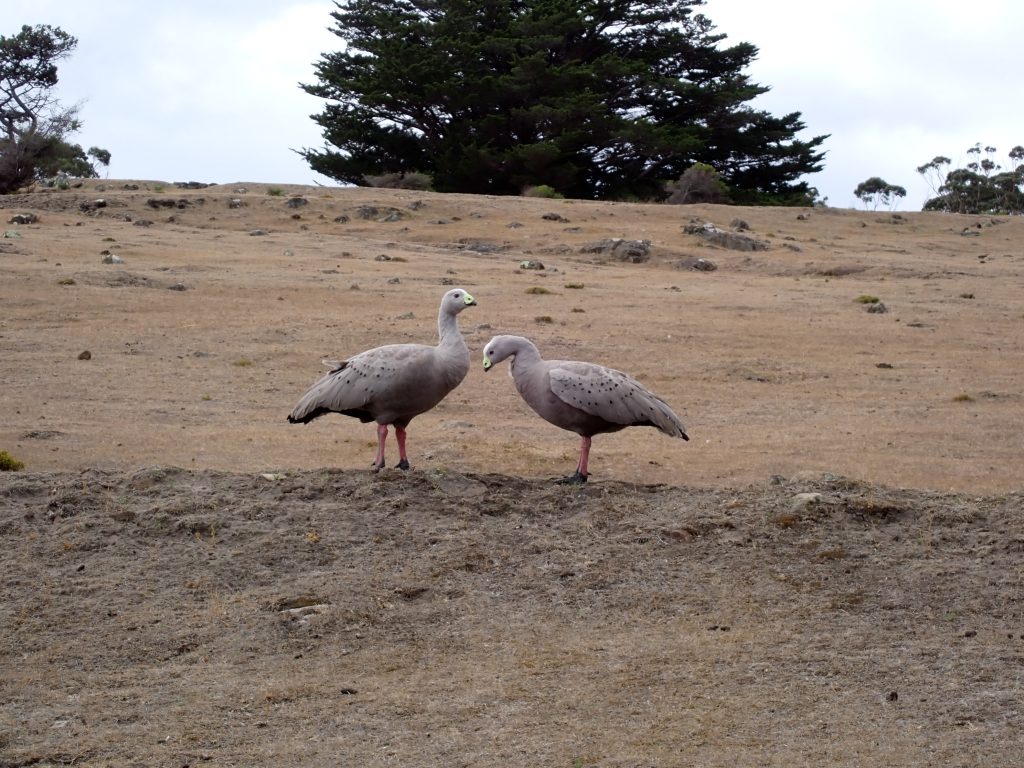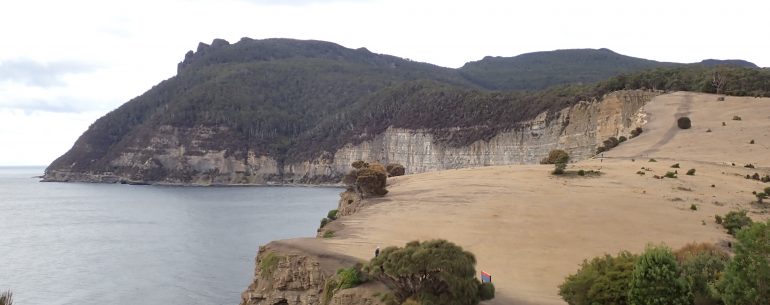We are now heading south and we had been recommended en route to visit Maria Island, so we booked a morning ferry across to the island from Triabunna. The ferry takes just half an hour and lands at a jetty on the island.
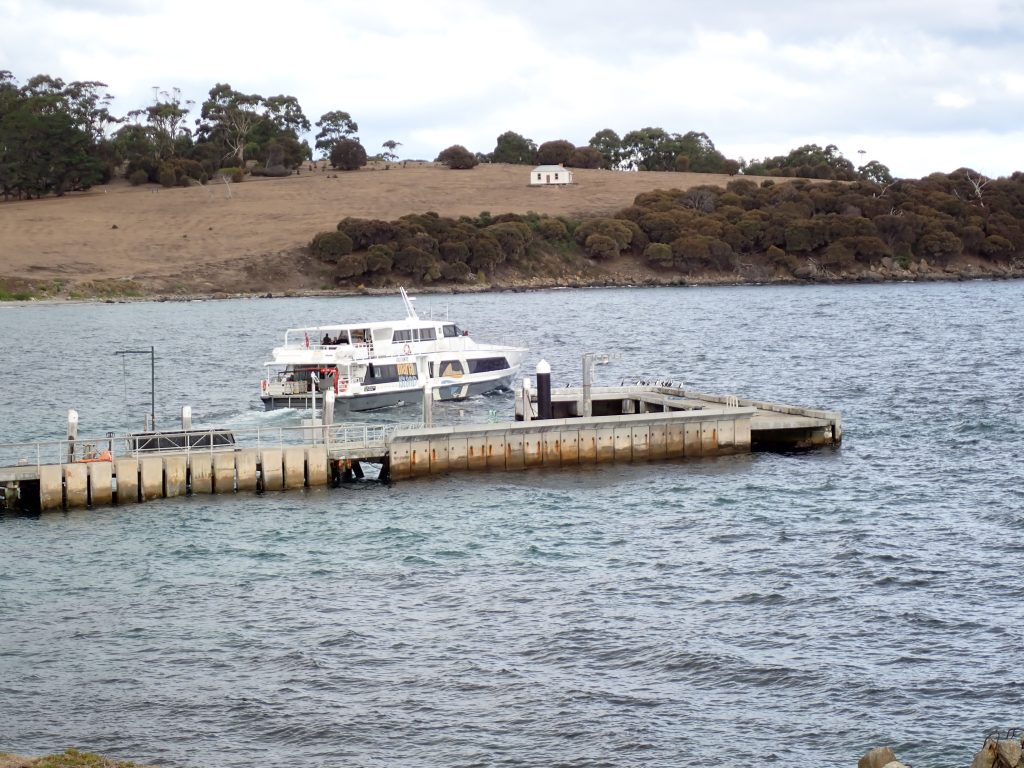
From the jetty we walked initially past the silos (used to store cement in the 1920s) and headed along the path to the fossil cliffs. This took us past the air strip, though any plane landing would have had to negotiate some fairly unusual hazards – a bunch of wallabies sleeping on the runway.
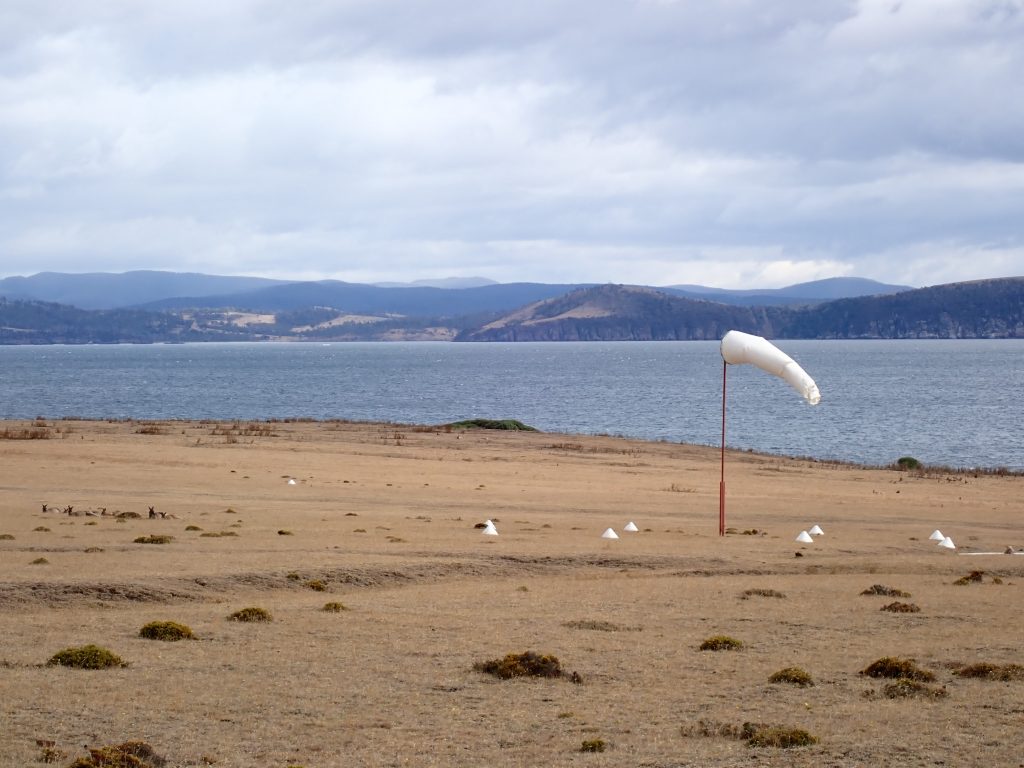
The fossil cliffs is an area which used to be quarried for limestone, but this area is now preserved (as part of the national park) and it is very clear why they are named fossil cliffs. The stone in the cliffs is studded with thousands of mussel-like shells. It is thought that the huge number of fossils is related to the cold conditions associated with the polar sea at the time. The fossils include sea fans, coral-like creatures, scallop shells and sea lilies.
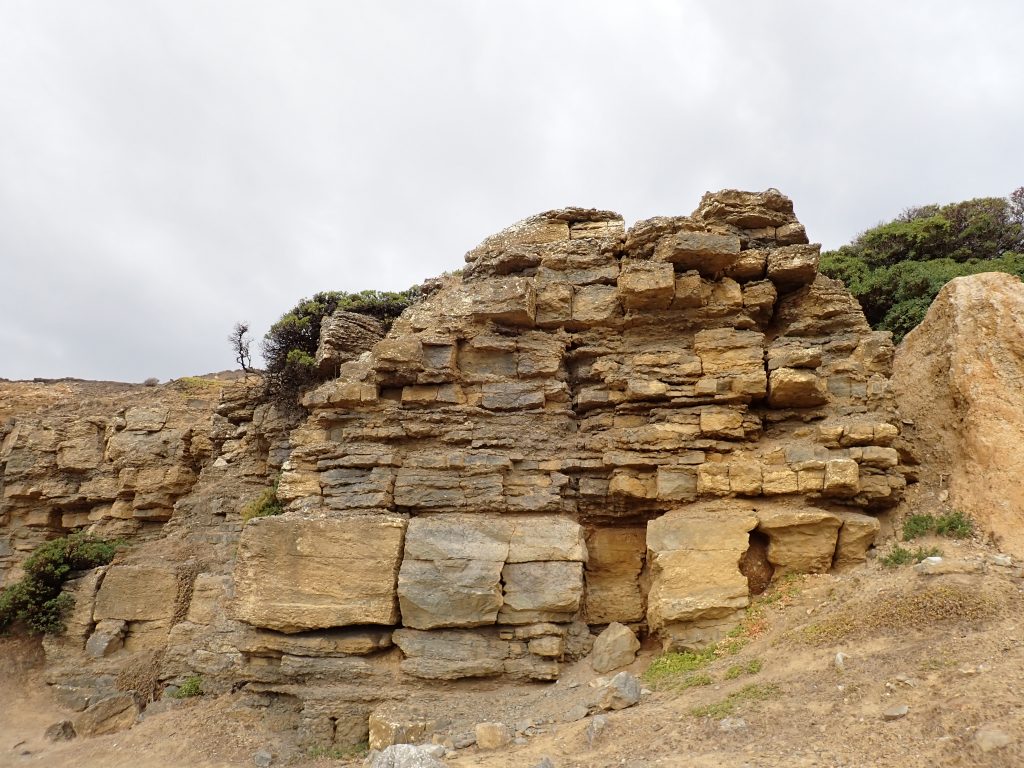
From there we walked along the edge of the cliffs and back down to where the track intersects with the route out of Darlington. A left turn took us up to the reservoir. This was originally created by the convicts in the period between 1825-1832 but was extended in later years. It is still in use today.

The route back down to Darlington takes you past the Twelve Apostles. These are the foundations of 12 small houses. In the 1880s an Italian named Diego Bernacchi thought that he could use Maria Island as a wine-making region. The houses were built to house the workers for the vineyards, but when the venture failed the houses were relocated to Hobart.
Darlington was the centre of the convict colony. This colony was termed a probation colony making it quite different from Macquarie and Port Arthur. Many of the buildings in Darlington have been retained and some restored – it is even possible to stay on the island at the old penitentiary. One of the most intriguing buildings was the house where the Irish nationalist leader William Smith O’Brien was exiled for his part in the Young Irelander Rebellion of 1848. This was connected with the Irish Potato Famine and he campaigned for an Irish national government able to take control of national resources and help alleviate the famine. For his part in the rebellion he was found guilty of high treason and was sentenced to be hung, drawn and quartered. However, petitions for clemency were signed by 70,000 people in Ireland and 10,000 people in England and as a result the sentence was commuted to life transportation.
He was treated differently to the other convicts and, while he tried to escape from Maria Island, he was betrayed by the captain of the schooner they had hired and so he was moved to the colony on Port Arthur. His cottage there still exists.
While on the island we managed to see quite a few different animals. As well as the wallabies, we saw dolphins near the jetty and green rosellas (sometimes called Tasmanian Rosellas) near Darlington and also in the bush by the fossil cliffs.

The other new birds we saw were Cape Barren geese. These (to us) are quite unusual looking geese with pink legs and a bright yellow cere or ceroma (a waxy structure) covering its bill. By the 1950s the numbers of geese were so low that may thought they were close to extinction, but initiatives to protect them seem to have been reasonably successful and the population levels are no longer thought to be in danger. These initiatives included their introduction to Maria Island in 1968 and there is now a stable popluation of around 100 there. Nevertheless, they remain one of the rarest of the geese in the world.
